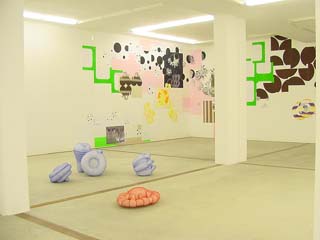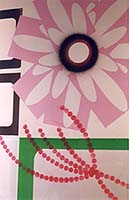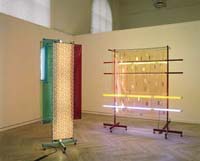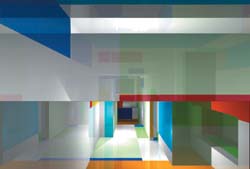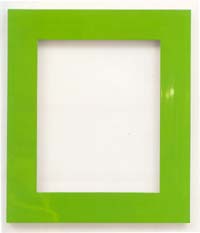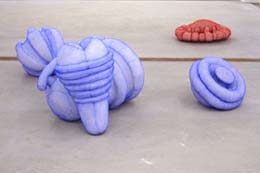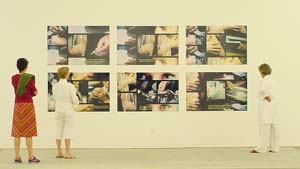
|

|
|
BETWEEN SPACES II
15 January - 8 February 2004
Kathrin Böhm, Andrea Geyer, Lone Høyer Hansen, Gerhard Mantz, Gerold Miller, Barbara Probst, Nadine Rennert og Susanne Weirich
The exhibition's curator, the Danish sculptress Lone Høyer Hansen, set up a rendezvous with 7 German colleagues at the Centro Cultural Andratx – situated on the Balearic Island of Majorca. The aim was to convene and show, on this site, distinctive spaces. The artists were creating - in situ - new spaces, on the basis of exchanges between one another, among the artworks and with the architecture. The art historian Ann Lumbye Sørensen documented the proces with the text Remarks on Spaces in Between. Now the exhibtion BETWEEN SPACES is showed in a new version in Galerie Asbaek Copenhagen. The works created by the eight very different artists are concentrating on spaces and between-spaces and also on how space, as an abstractly and rationally conceived entity, has the capacity to generate meaning or open up to different kinds of sensory or cognitive possibilities. Our private homes, public buildings, open plazas and other areas and domains have all been devised in relation to ideologies and notions. Mental spaces are also ordered according to principles that are not always acknowledged. Accordingly, BETWEEN SPACES, through, within and with art, encourages the viewer to "cast new glances at the mental and physical spaces within which we human beings move around". About the artists ...
Kathrin Böhm(Berlin/London), * 1969. Together with the architect Andreas Lang (London) and the artist Stefan Saffer (Berlin), Kathrin Böhm is working on projects in the public space, with a focus on possibilities for generating new spaces, where different and conflicting interests and expectations can meet. Her individual artistic practice is characterized by processual sequences by means of which she temporarily transforms the place's identity. Materials from earlier projects are incorporated into new ones. Transformation, time and recollection are the constituent parts of Böhm's work with a sharpened awareness in the face of the private and the public spaces. 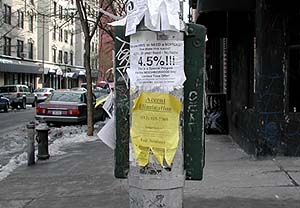 Andrea Geyer (Freiburg/New York), * 1971. Andrea Geyer is absorbed with questions about how gender and identity are constructed within a societal and educational context. Investigations within the compass of this theme have taken the form of video sequences with fiction's embossed narratives. In collaboration with the American artist Sharon Hayes, Geyer has appropriated the interview genre in order to illuminate and disclose language's layers of meanings.
Taking her point of origin in sculpture as a phenomenological bodily Gestalt-figure, with special attention centered on dialogues between the work and the viewer, and conducting her investigations on a cross-disciplinary aesthetic field, Lone Høyer Hansen has been examining a great many possible physical and mental spaces, where installation, photography and an expanded sculptural praxis are brought into play. Between-spaces, scalar transpositions and a profusion of materials are employed for purposes of creating other and imaginary provisional places/sites. Gerhard Mantz (Berlin), * 1950.
The artist is working with paintings in a dramatically expanded field that includes painted wall- and floor-objects and paintings that evoke hitherto unknown virtual spaces. The computer-generated works open for undreamt-of possibilities of forms and spatial formations, where any kind of familiar logic falls short. What we have here are explorations into impossible constellations and figurations, which are folded in and folded out in dynamic, accelerating visions. The plausible and the improbable compete for the viewer's attention.
Gerold Miller (Berlin), * 1961. The frame frames the picture, throwing it into relief and guiding the spectator's gaze into the painting's own world - a world that, earlier on, was formed by central perspective and later came to be splintered into fragments or displayed as emptiness' monochrome surface. In Miller's work, the painting is the frame, - constituted in the form of painted geometric and curved frames. The frame and the wall are the concrete and the specific image inside a presently existing and factual space. 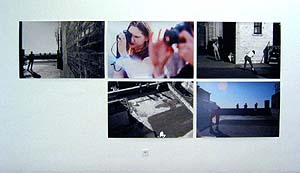 Barbara Probst (München, New York), * 1964 Photography as a witness to the truth and as a mirror of reality has been assailed from several corners – especially by Barbara Probst, who in her own special way calls attention to photography's paradox, positioned between fact and fancy. In her photographic series, we – the viewers – see, not through a single lens but through many, which simultaneously and from different distances and angles see a person, an action or a situation extended over an interval of time. In this way, the artist undermines the picture's illusion about a securely contained present moment; instead, the photographic image's problematic reality-status is rendered thematic.
Nadine Rennert (Berlin), * 1965. The artist destabilizes the conception of sculpture as a concrete and solid form in space. Her sculptures seem to be changing, growing or shrinking as a function of the viewer's gaze, by means of which the sculpture as a point of orientation and as a sounding apparatus is transformed into a series of narrative metamorphoses. The materials – cloth, cotton and gauze are stretched like a skin over lightweight skeletons or they are rolled together and compressed into organic forms which may call to mind non-identifiable internal organs or fragments of limbs within a surrealistic spectrum of possibilities.
Susanne Weirich ( Berlin), * 1962. In the manner of an anthropologist, the artist is conducting investigations and analyses of selected disciplines, institutions and other places and spaces in society, such as, for example, the hairdresser's distinctive marks. It is the special discourses that characterize the many domains which Weirich is deconstructing and re-ordering according to her own conception, with the result that the view of reality these systems represent is transformed and comes to be manifest in the form of new improbable realities. The show is curated by Lone Høyer Hansen |
| Dansk version | English version |
|
||||||||||||||||||||||||
| TOP |
